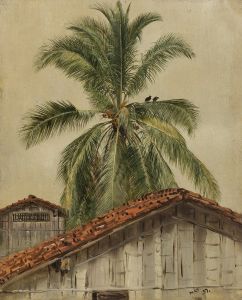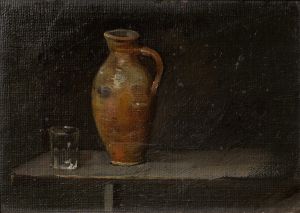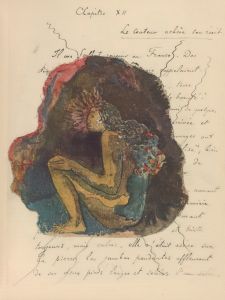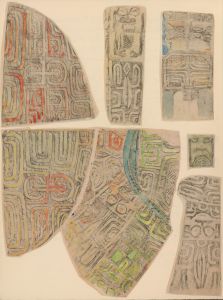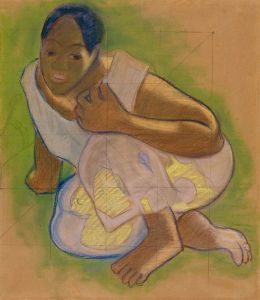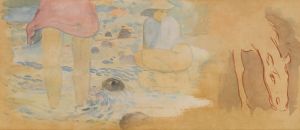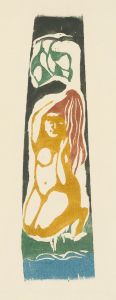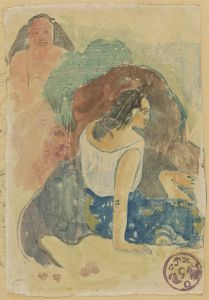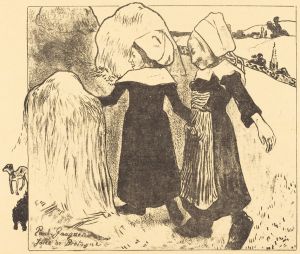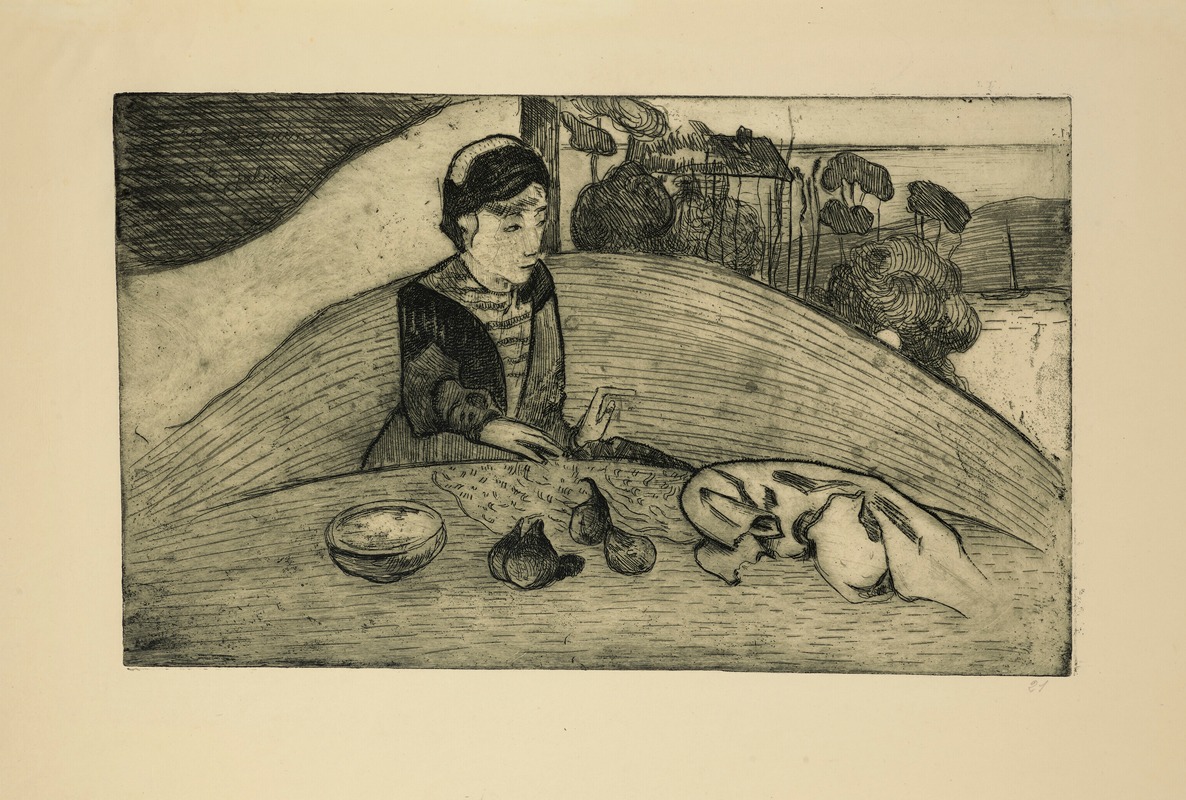
La femme aux figues
A hand-painted replica of Paul Gauguin’s masterpiece La femme aux figues, meticulously crafted by professional artists to capture the true essence of the original. Each piece is created with museum-quality canvas and rare mineral pigments, carefully painted by experienced artists with delicate brushstrokes and rich, layered colors to perfectly recreate the texture of the original artwork. Unlike machine-printed reproductions, this hand-painted version brings the painting to life, infused with the artist’s emotions and skill in every stroke. Whether for personal collection or home decoration, it instantly elevates the artistic atmosphere of any space.
"La femme aux figues" (The Woman with Figs) is a painting by the renowned French Post-Impressionist artist Paul Gauguin. Created in 1899, this artwork is part of Gauguin's prolific period in Tahiti, where he sought to capture the essence of the island's culture and its people through his unique artistic lens.
Paul Gauguin, born in 1848 in Paris, was a leading figure in the Symbolist movement and is best known for his experimental use of color and Synthetist style that were distinctly different from Impressionism. His journey to Tahiti in 1891 marked a significant shift in his artistic career, as he aimed to escape European civilization and immerse himself in what he considered a more "primitive" and pure environment.
"La femme aux figues" reflects Gauguin's fascination with Tahitian culture and his desire to depict the island's inhabitants in a way that emphasized their connection to nature. The painting features a Tahitian woman, who is the central figure, surrounded by lush foliage and holding figs, which are symbolic of fertility and abundance. Gauguin's use of vibrant colors and bold outlines in this work is characteristic of his style during this period, where he often employed a palette that was both vivid and expressive.
The composition of "La femme aux figues" is notable for its simplicity and focus on the subject. Gauguin's approach was to strip away unnecessary details, allowing the viewer to concentrate on the emotional and symbolic aspects of the painting. This technique was part of his broader artistic philosophy, which sought to convey deeper meanings and emotions through simplified forms and colors.
Gauguin's time in Tahiti was not without controversy. His portrayal of the island and its people has been critiqued for its romanticized and sometimes stereotypical depictions. However, his works from this period, including "La femme aux figues," are celebrated for their innovative use of color and form, which have had a lasting impact on modern art.
The painting is part of a larger body of work that Gauguin produced during his time in Tahiti, which includes other notable pieces such as "Where Do We Come From? What Are We? Where Are We Going?" and "Two Tahitian Women." These works collectively highlight Gauguin's exploration of themes related to existence, identity, and the human connection to nature.
"La femme aux figues" is housed in a private collection, and as such, it is not as widely accessible as some of Gauguin's other works that are held in public museums. Nonetheless, it remains an important piece in understanding Gauguin's artistic journey and his contributions to the Post-Impressionist movement.
In summary, "La femme aux figues" exemplifies Paul Gauguin's innovative approach to art during his Tahitian period, characterized by bold colors, simplified forms, and a focus on the symbolic representation of his subjects. This painting, like many of Gauguin's works, continues to be studied and appreciated for its artistic significance and its role in the evolution of modern art.






